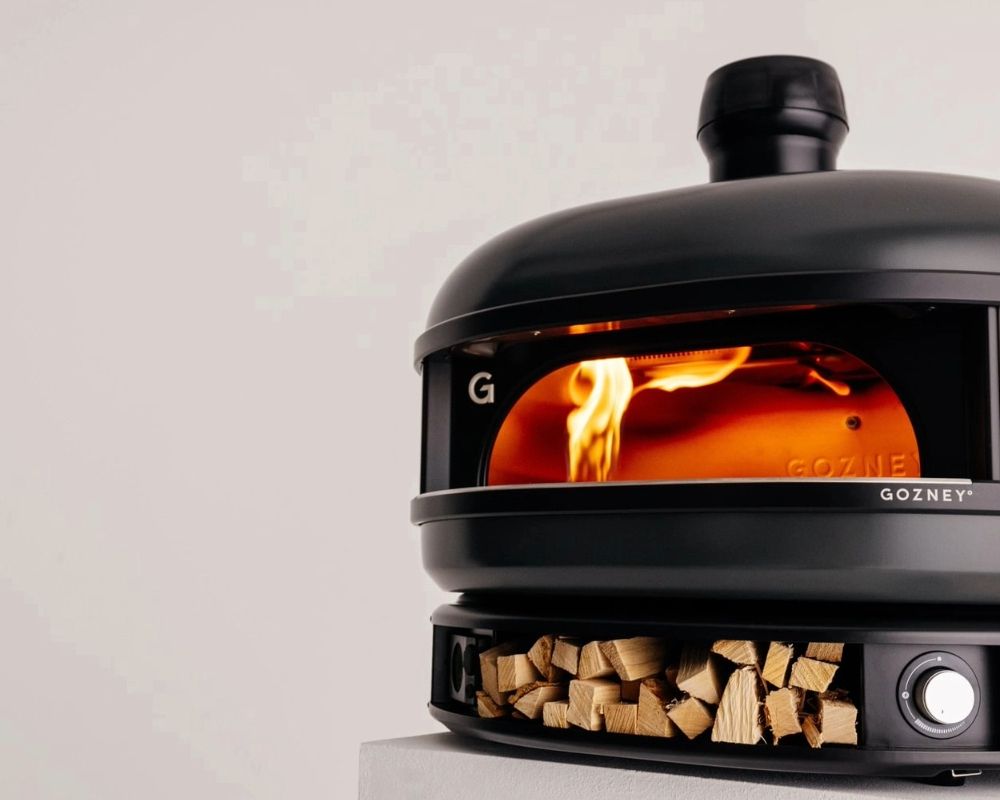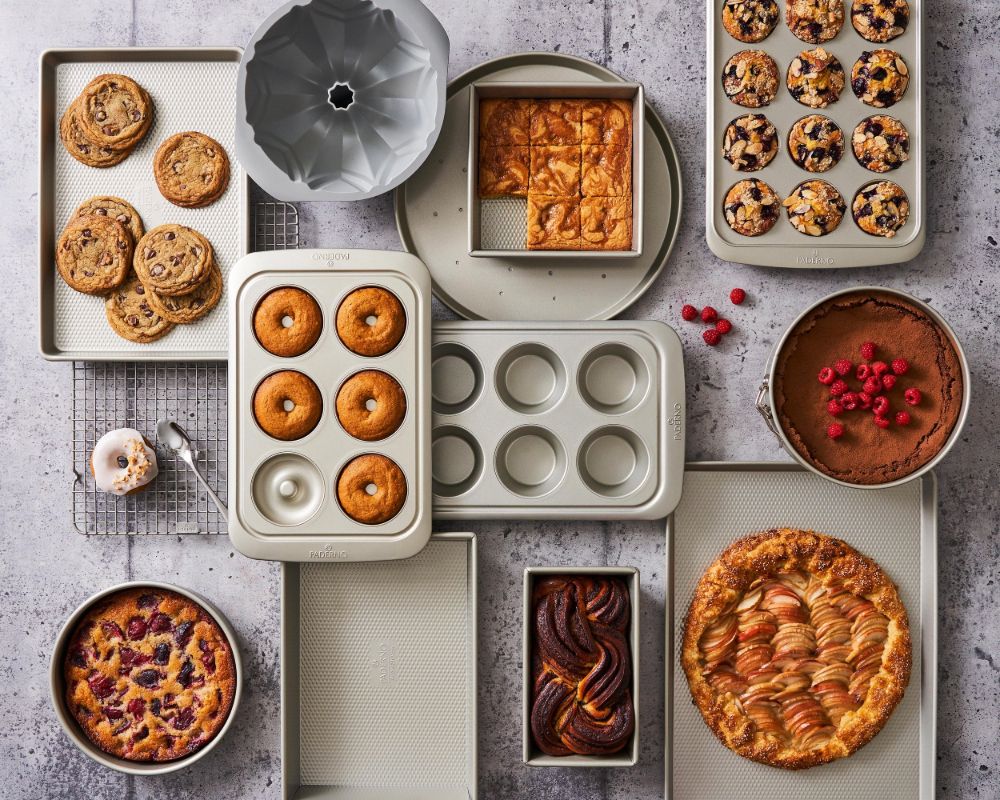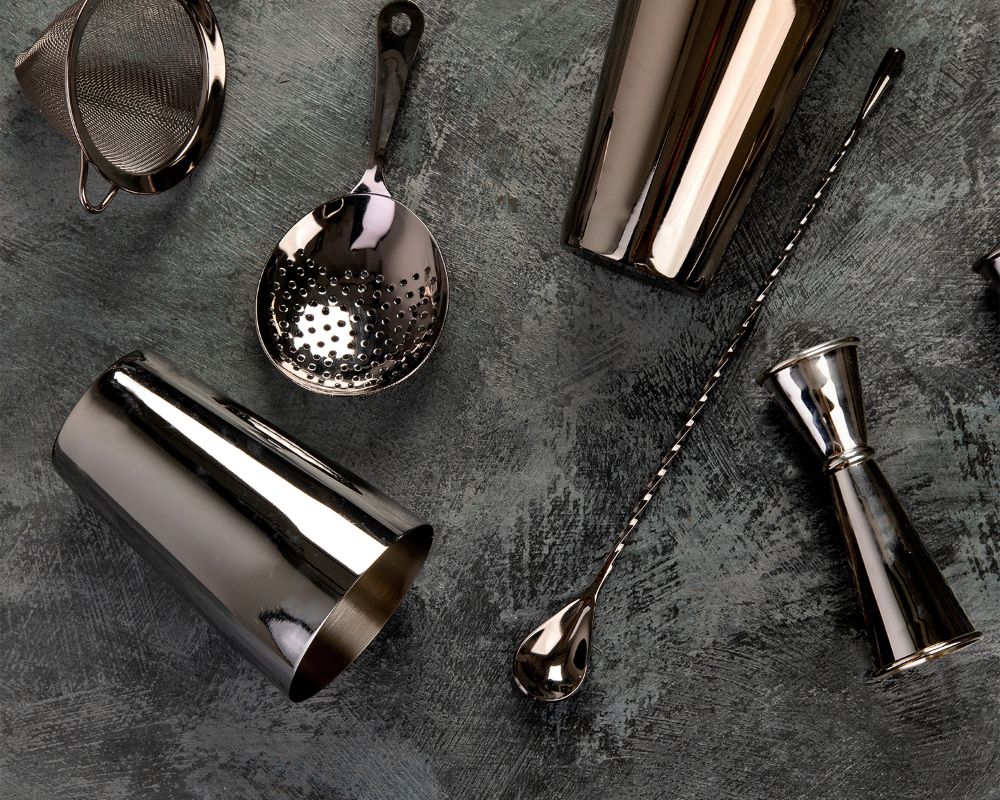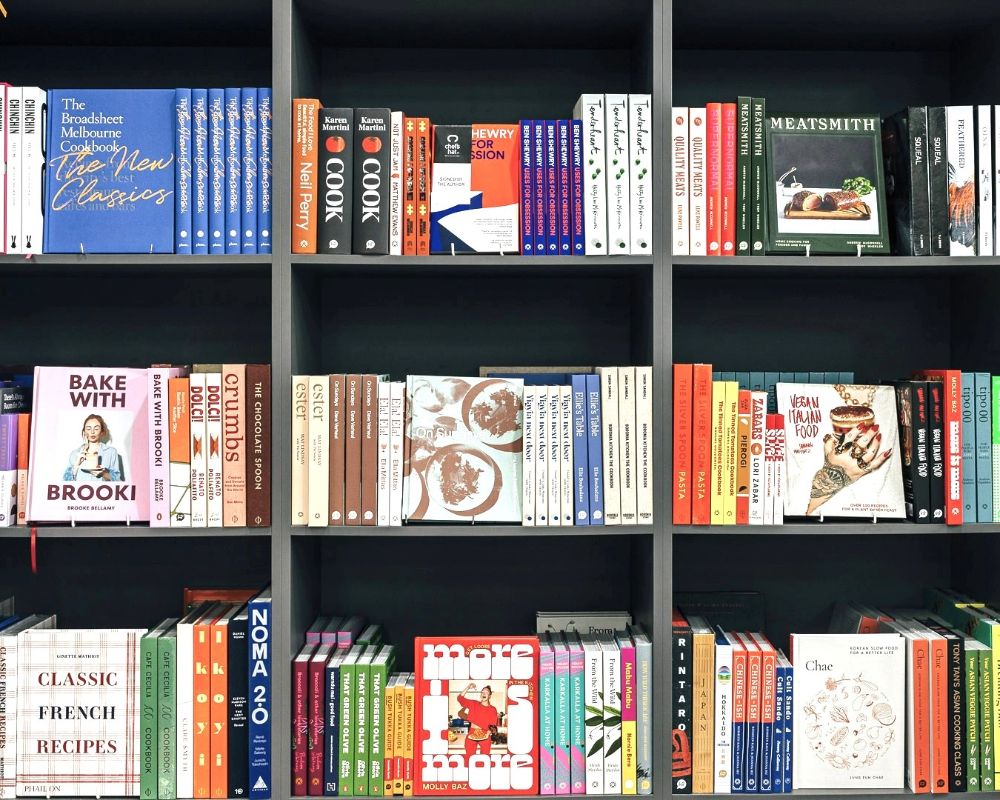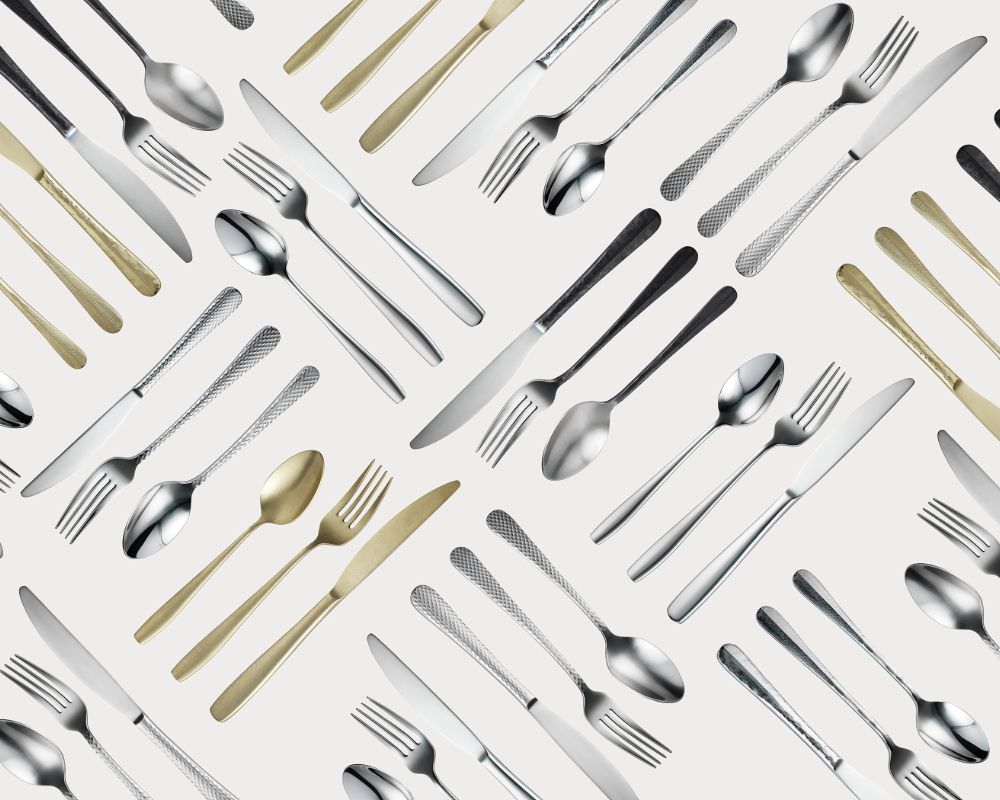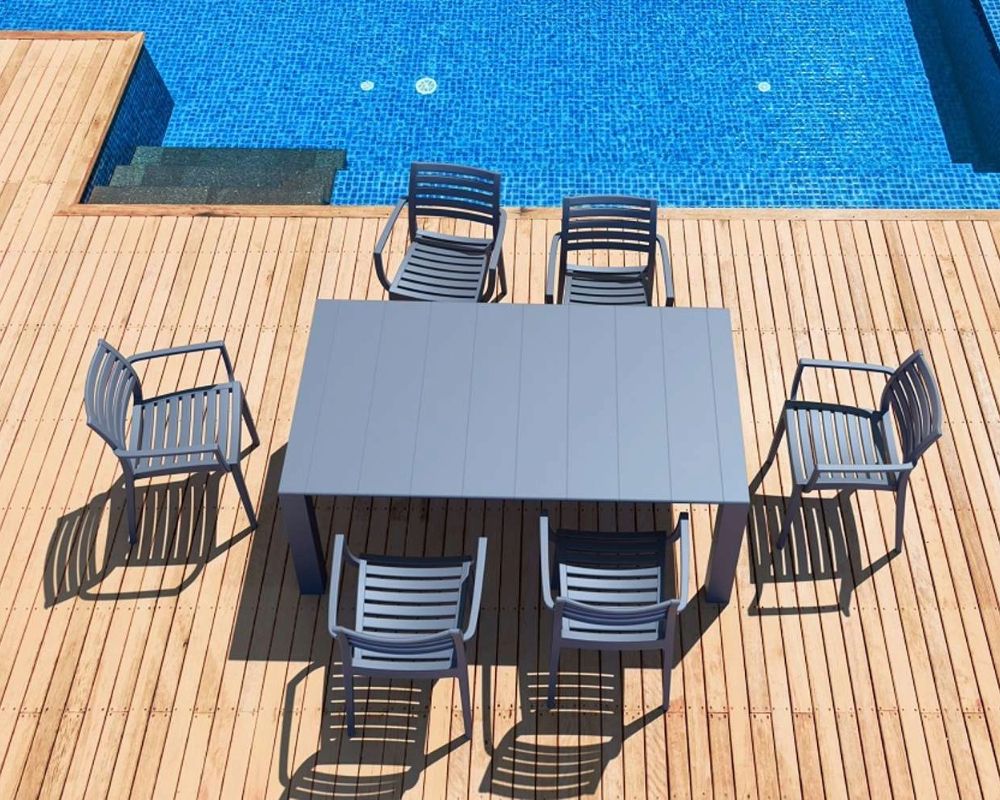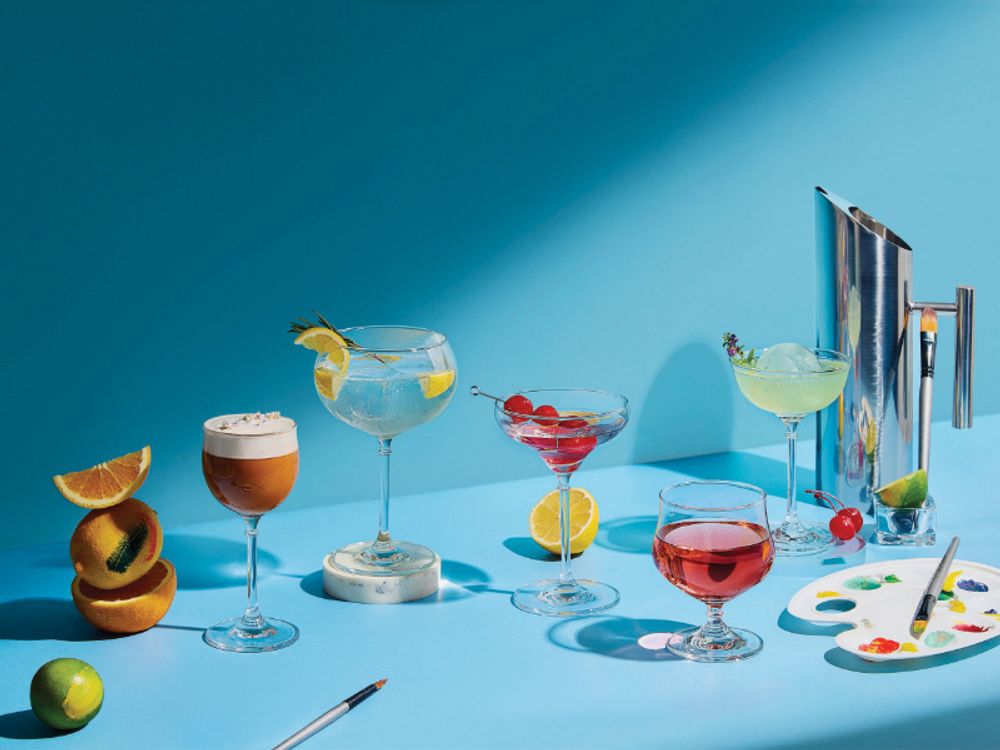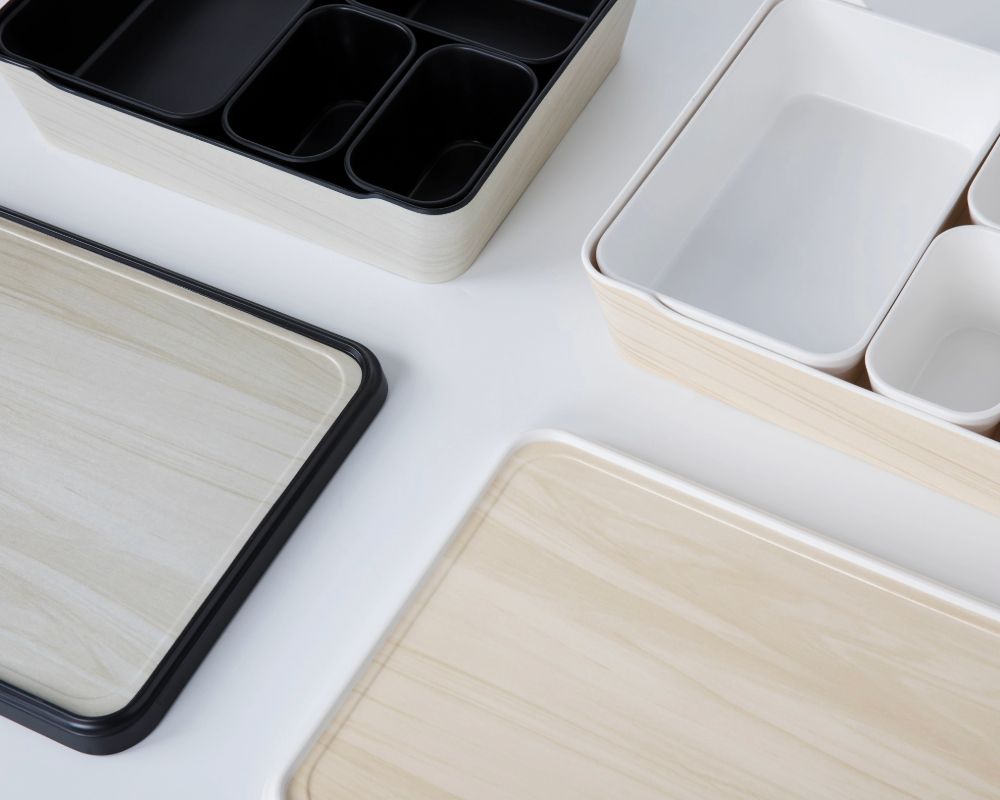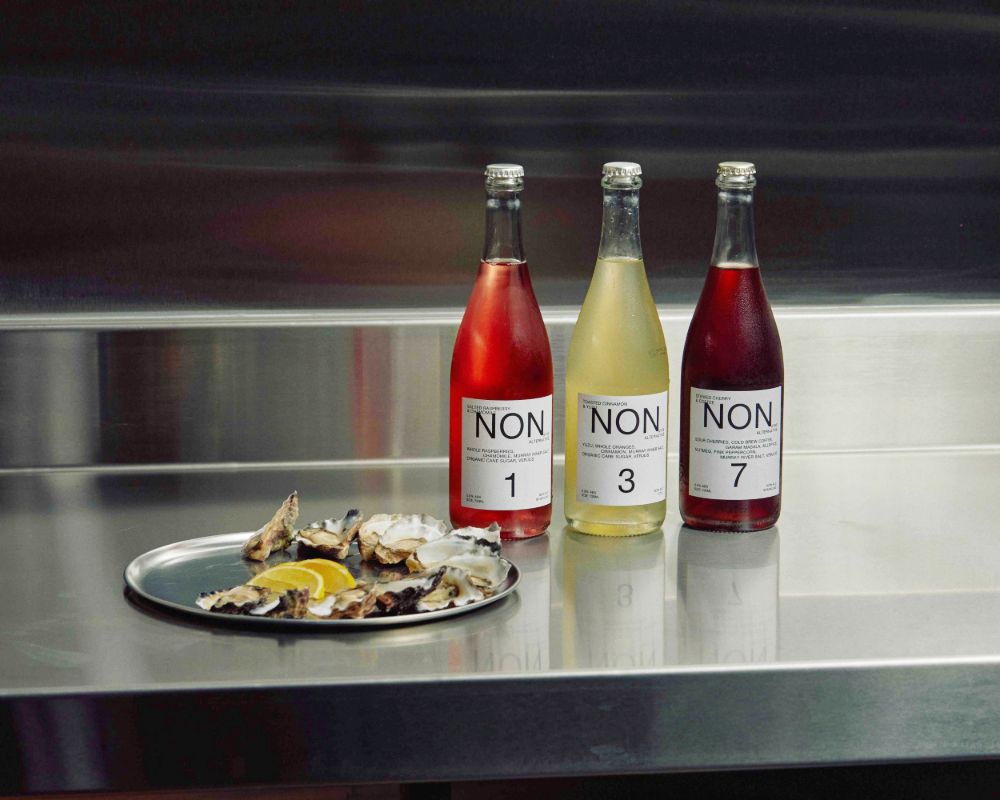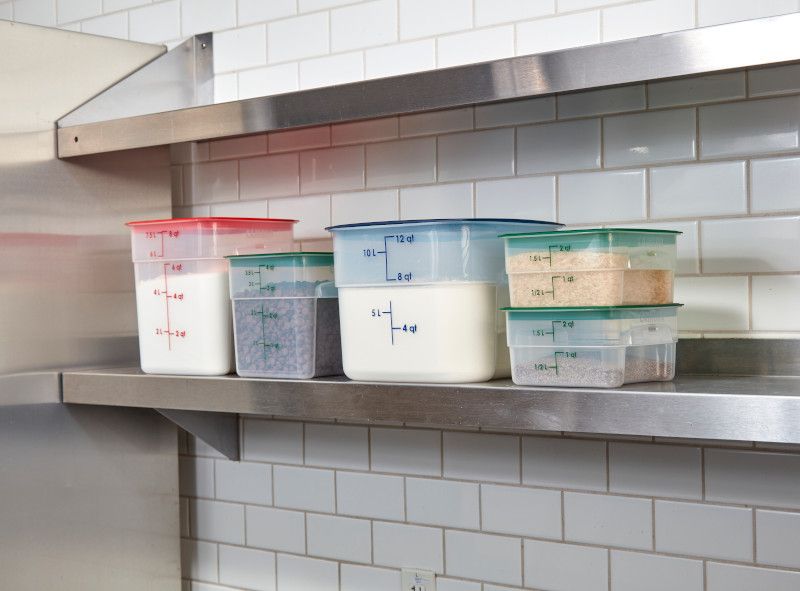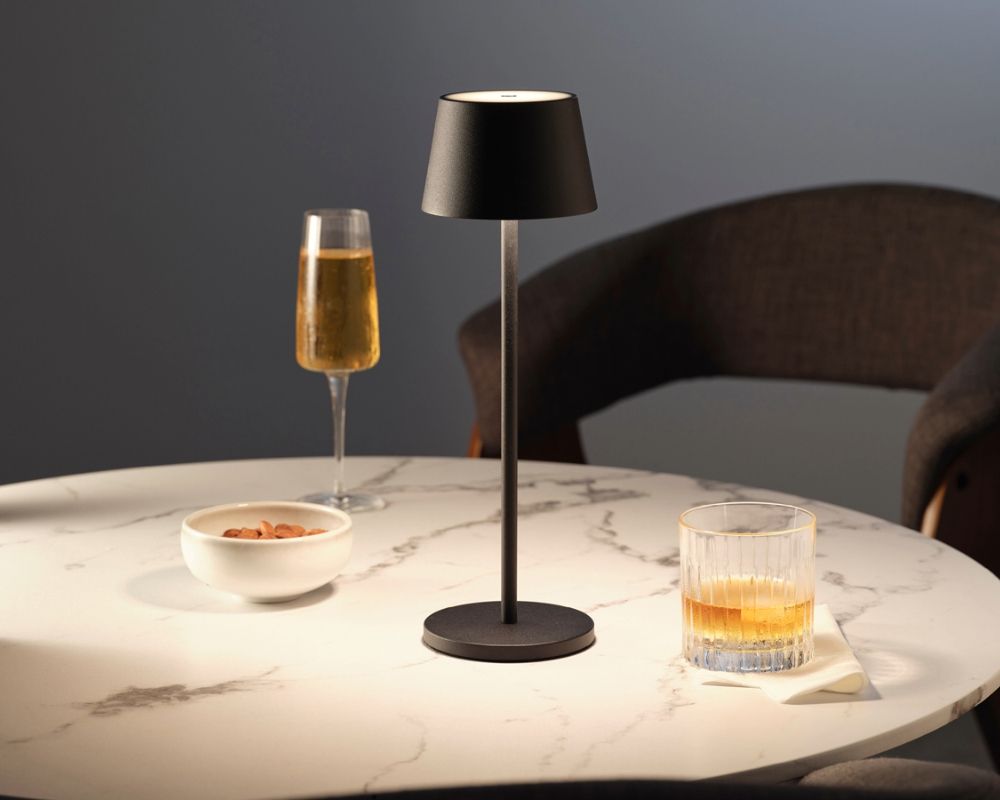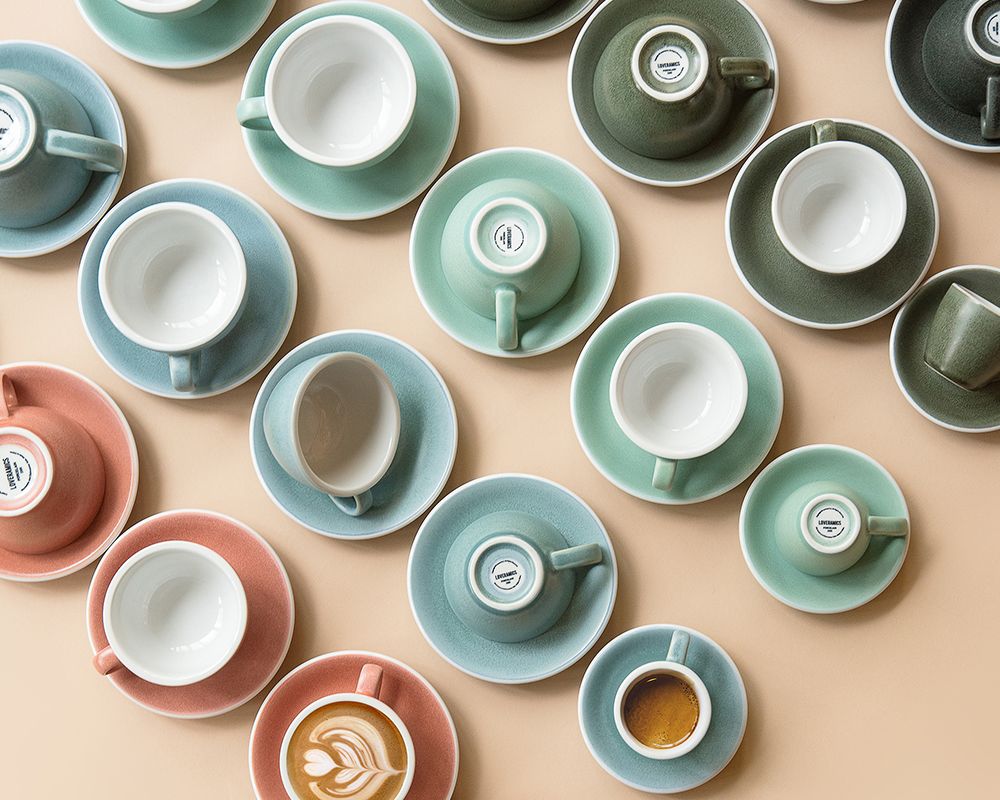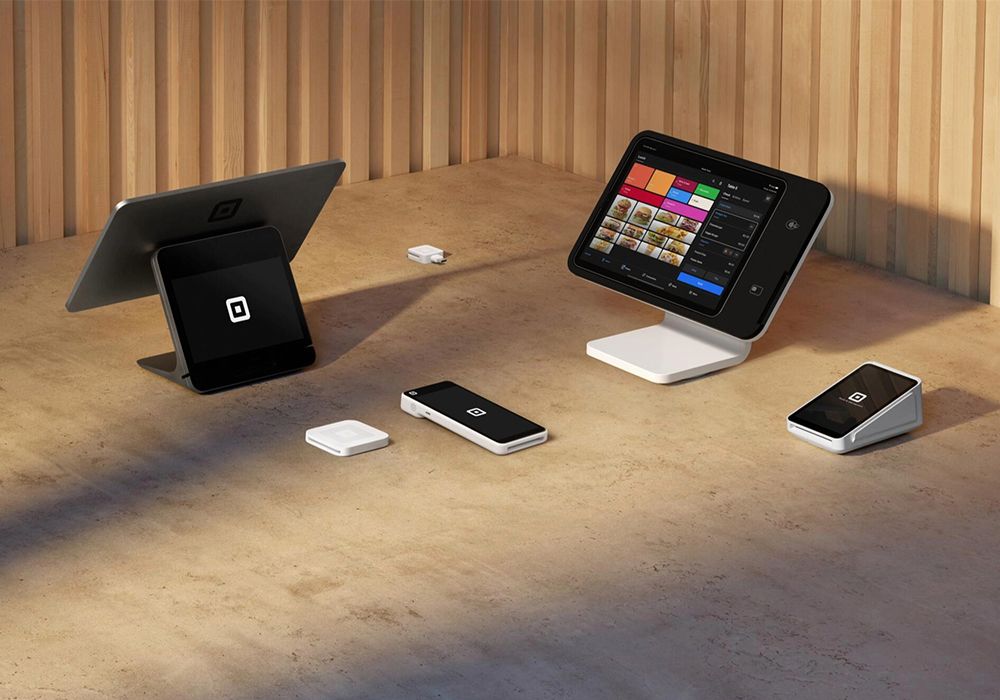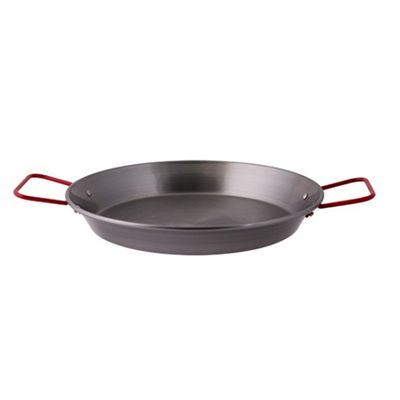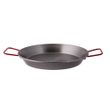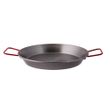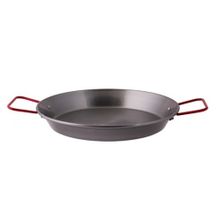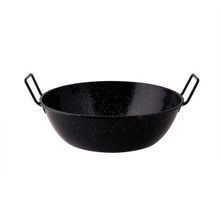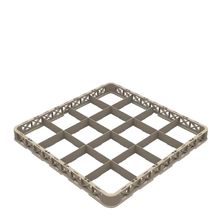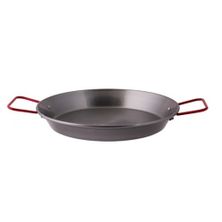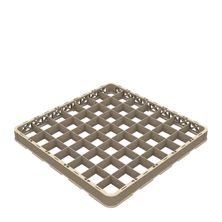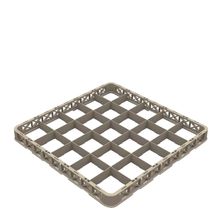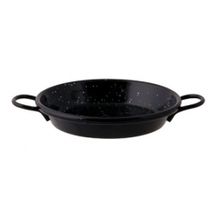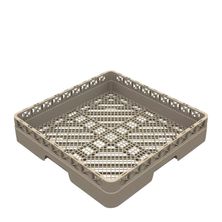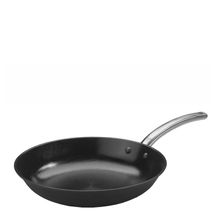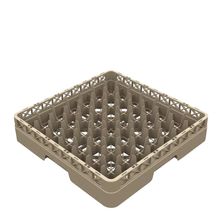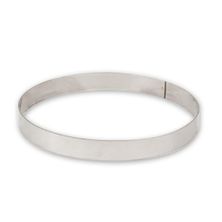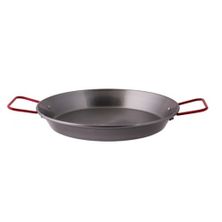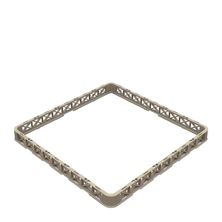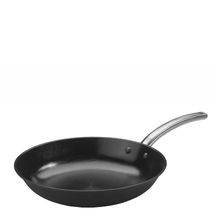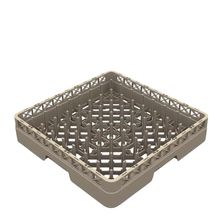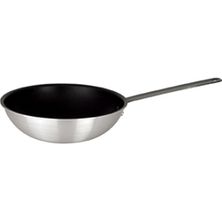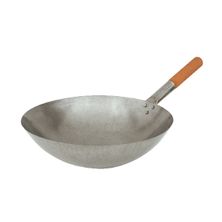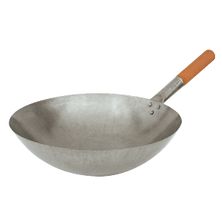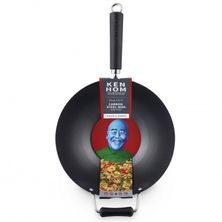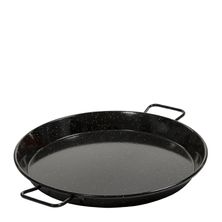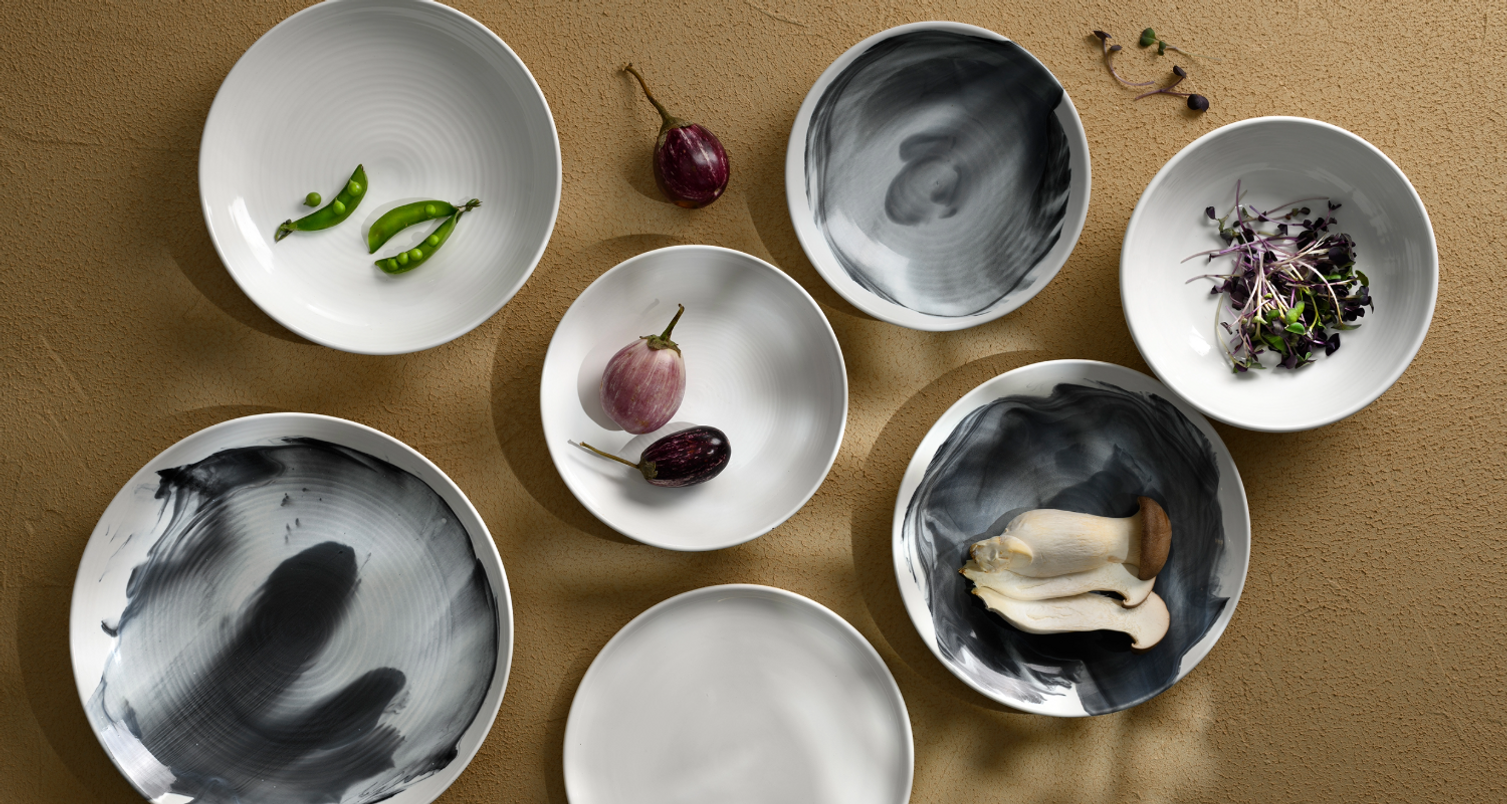PUJADAS PAELLA PAN BLACK STEEL
The traditional paella pan is round in shape and made from polished carbon steel. The pan has low slated sides and two curved handles set opposing each other around the rim, and riveted into the side of the pan. The pan is typically flat no more than a few centimetres tall, and the diameter of the pan can vary, but is usually dependent on the number of people to be served.
The material used in making the pan is always thin so as to transmit heat immediately and also to cook quickly when removed from the heat source, maximising heat control. The bottom of the pan is not flat but slightly convex, and characterised by a lattice of small shallow dimples, allowing the rice to become textured through slight variations in cooking conditions.
The traditional paella pan is round in shape and made from polished carbon steel. The pan has low slated sides and two curved handles set opposing each other around the rim, and riveted into the side of the pan. The pan is typically flat no more than a few centimetres tall, and the diameter of the pan can vary, but is usually dependent on the number of people to be served.
The material used in making the pan is always thin so as to transmit heat immediately and also to cook quickly when removed from the heat source, maximising heat control. The bottom of the pan is not flat but slightly convex, and characterised by a lattice of small shallow dimples, allowing the rice to become textured through slight variations in cooking conditions.
The traditional paella pan is round in shape and made from polished carbon steel. The pan has low slated sides and two curved handles set opposing each other around the rim, and riveted into the side of the pan. The pan is typically flat no more than a few centimetres tall, and the diameter of the pan can vary, but is usually dependent on the number of people to be served.
The material used in making the pan is always thin so as to transmit heat immediately and also to cook quickly when removed from the heat source, maximising heat control. The bottom of the pan is not flat but slightly convex, and characterised by a lattice of small shallow dimples, allowing the rice to become textured through slight variations in cooking conditions.
The traditional paella pan is round in shape and made from polished carbon steel. The pan has low slated sides and two curved handles set opposing each other around the rim, and riveted into the side of the pan. The pan is typically flat no more than a few centimetres tall, and the diameter of the pan can vary, but is usually dependent on the number of people to be served.
The material used in making the pan is always thin so as to transmit heat immediately and also to cook quickly when removed from the heat source, maximising heat control. The bottom of the pan is not flat but slightly convex, and characterised by a lattice of small shallow dimples, allowing the rice to become textured through slight variations in cooking conditions.
The traditional paella pan is round in shape and made from polished carbon steel. The pan has low slated sides and two curved handles set opposing each other around the rim, and riveted into the side of the pan. The pan is typically flat no more than a few centimetres tall, and the diameter of the pan can vary, but is usually dependent on the number of people to be served.
The material used in making the pan is always thin so as to transmit heat immediately and also to cook quickly when removed from the heat source, maximising heat control. The bottom of the pan is not flat but slightly convex, and characterised by a lattice of small shallow dimples, allowing the rice to become textured through slight variations in cooking conditions.
The traditional paella pan is round in shape and made from polished carbon steel. The pan has low slated sides and two curved handles set opposing each other around the rim, and riveted into the side of the pan. The pan is typically flat no more than a few centimetres tall, and the diameter of the pan can vary, but is usually dependent on the number of people to be served.
The material used in making the pan is always thin so as to transmit heat immediately and also to cook quickly when removed from the heat source, maximising heat control. The bottom of the pan is not flat but slightly convex, and characterised by a lattice of small shallow dimples, allowing the rice to become textured through slight variations in cooking conditions.
The traditional paella pan is round in shape and made from polished carbon steel. The pan has low slated sides and two curved handles set opposing each other around the rim, and riveted into the side of the pan. The pan is typically flat no more than a few centimetres tall, and the diameter of the pan can vary, but is usually dependent on the number of people to be served.
The material used in making the pan is always thin so as to transmit heat immediately and also to cook quickly when removed from the heat source, maximising heat control. The bottom of the pan is not flat but slightly convex, and characterised by a lattice of small shallow dimples, allowing the rice to become textured through slight variations in cooking conditions.
Permission to Return and to Receive Credit
We will accept the return of merchandise ONLY IF IN SALEABLE CONDITION and notification is within 7 days of receipt. We will Issue Credit to your account or Credit Card in Australian dollars. For unwanted merchandise, the cost of return shipping shall be the responsibility of the customer.
Damaged or Incorrect Merchandise
We will, upon your request, replace any merchandise that is received in damaged condition or as a result of a picking error. No material will be accepted or replacements issued without prior approval to return such merchandise. Filing of claims will be our responsibility.



